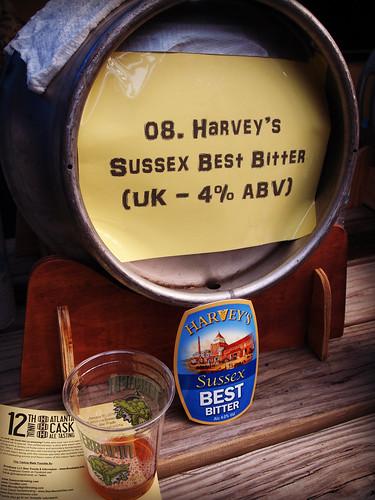“Ordinary bitter is perhaps the single greatest achievement of British brewing, combining a huge amount of character, flavour and variety into something that, by international standards, is untypically low in strength.”
—The Pub Curmudgeon.
By definition, [ordinary bitter is] intended as an everyday quaffing beer for having a couple of pints at lunchtime without writing off the rest of the day, or an evening session in the pub that still leaves you reasonably clear-headed the following morning. It’s not meant to be an exotic show pony for sniffing, sipping and holding up to the light.
While its market share has been eroded in recent years by the rise of widely-distributed premium best bitters such as London Pride, Bombardier and Wainwright, ordinary bitter
—defined broadly as any beers between 3.4% and 4.0% ABV in the gold-amber-copper colour spectrum [emphasis mine]—
probably still accounts for half of all cask beer drunk in the UK, and undoubtedly more if you extend the definition to include keg ales too. But it still tends to be regarded as something of a poor relation against more fashionable, stronger and more heavily-promoted beers.
Which ordinary bitters stand out amongst those currently available? The one that immediately springs to mind is Harvey’s of Lewes, which many see as a perfect balance of malt and hops.
Whether Sussex is an ordinary (but not so ordinary) bitter or a best bitter, I'll not debate dinging nits. I'll simply stipulate to its goodness.
In 2005 and 2006, it won the Best Bitter category at the Great British Beer Festival. Last year, I was happy to taste it, not there, but over here, at the 12th annual Atlanta Cask Ale Tasting. It had survived its trans-Atlantic voyage well. I hope it will again be so fortunate, later today, at the 13th annual.

The Pub Curmudgeon concludes his encomium as a devils' advocate: “So can any beers in this category truly be regarded as great, or are they all well, just a bit "ordinary"?”
To which, I answer, “Yes —a hearty quaff and repeat— yes.” Bravo, session beer.
-----more-----
- 13th annual Atlanta Cask Ale Tasting
- WHEN
Saturday, 21 January 2017: 2:30-6:00pm - WHERE
5 Seasons Brewing Company, 5600 Roswell Road, Sandy Springs, Georgia 30342 - WHO
Organized by Brewtopia. - WHY
A portion of the proceeds goes to the Atlanta Humane Society.
- WHEN
- Devil's advocate: "Why it's time to ‘just say no’ to cask ale."
- What's in a name? What's an "Ordinary Bitter," a "Best Bitter"? For a definition, let's go, logically, to the U.K. From CAMRA (Campaign for Real Ale):
Bitters developed towards the end of the 19th century as brewers began to produce beers that could be served in pubs after only a few days storage in cellars. Bitters grew out of pale ale but were usually deep bronze to copper in colour due to the use of slightly darker crystal malts. Bitter falls into the 3.4% to 3.9% band, with Best Bitter 4% upwards but a number of brewers label their ordinary Bitters 'Best'. A further development of Bitter comes in the shape of Extra or Special Strong Bitters of 5% or more: familiar examples of this style include Fuller's ESB and Greene King Abbot.
With ordinary Bitter, look for a spicy, peppery and grassy hop character, a powerful bitterness, tangy fruit and juicy and nutty malt. With Best and Strong Bitters, malt and fruit character will tend to dominate but hop aroma and bitterness are still crucial to the style, often achieved by 'late hopping' in the brewery or adding hops to casks as they leave for pubs. - Pic(k) of the Week: one in a weekly series of photos taken (or noted) by me, posted on Saturdays, and often, but not always, with a good fermentable as the subject.
- Camera: Olympus Pen E-PL1.
- Commercial reproduction requires explicit permission, as per Creative Commons.
- For more from YFGF:
- Follow on Twitter: @Cizauskas.
- Like on Facebook: YoursForGoodFermentables.
- Follow on Flickr: Cizauskas.
- Follow on Instagram: @tcizauskas.










No comments:
Post a Comment
Comment here ...